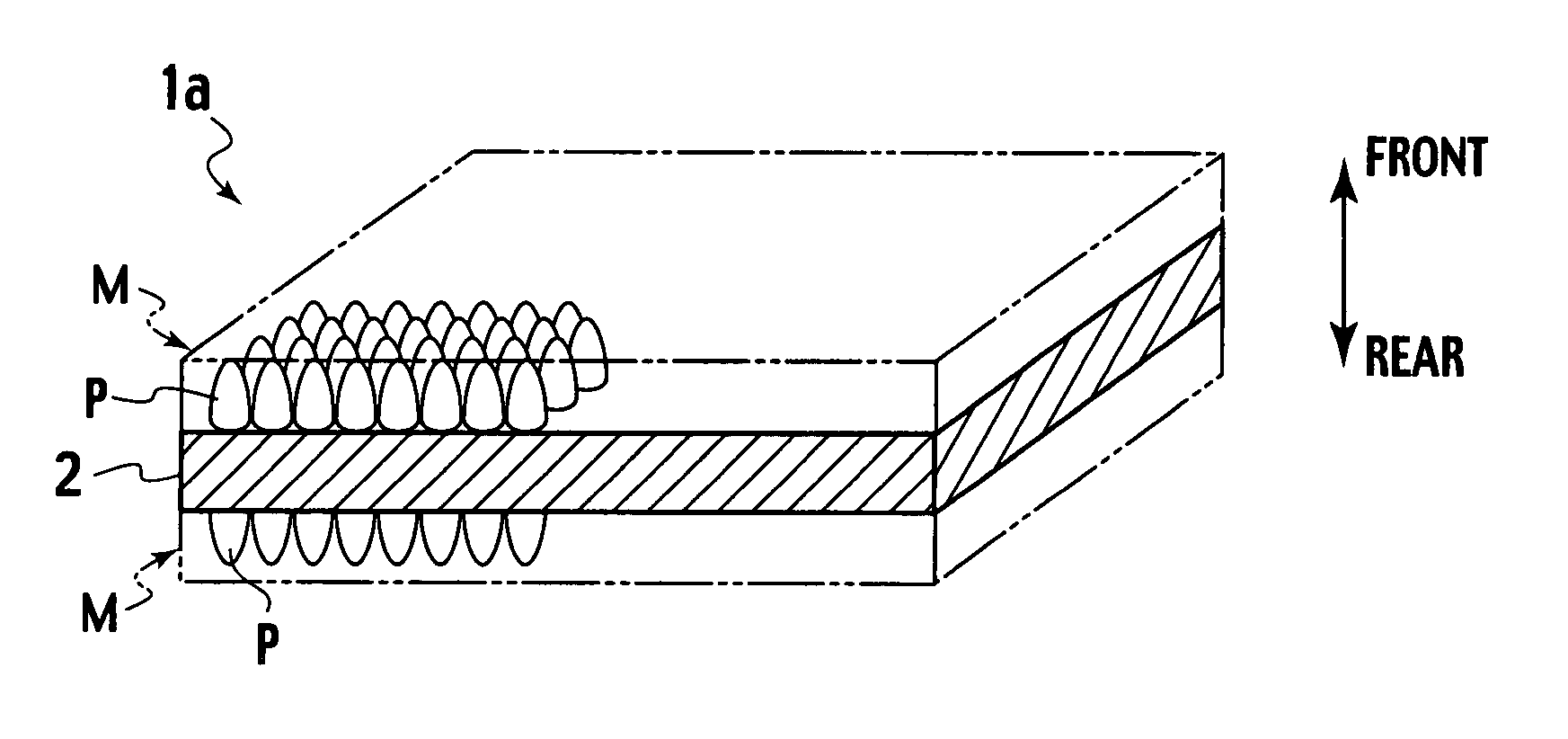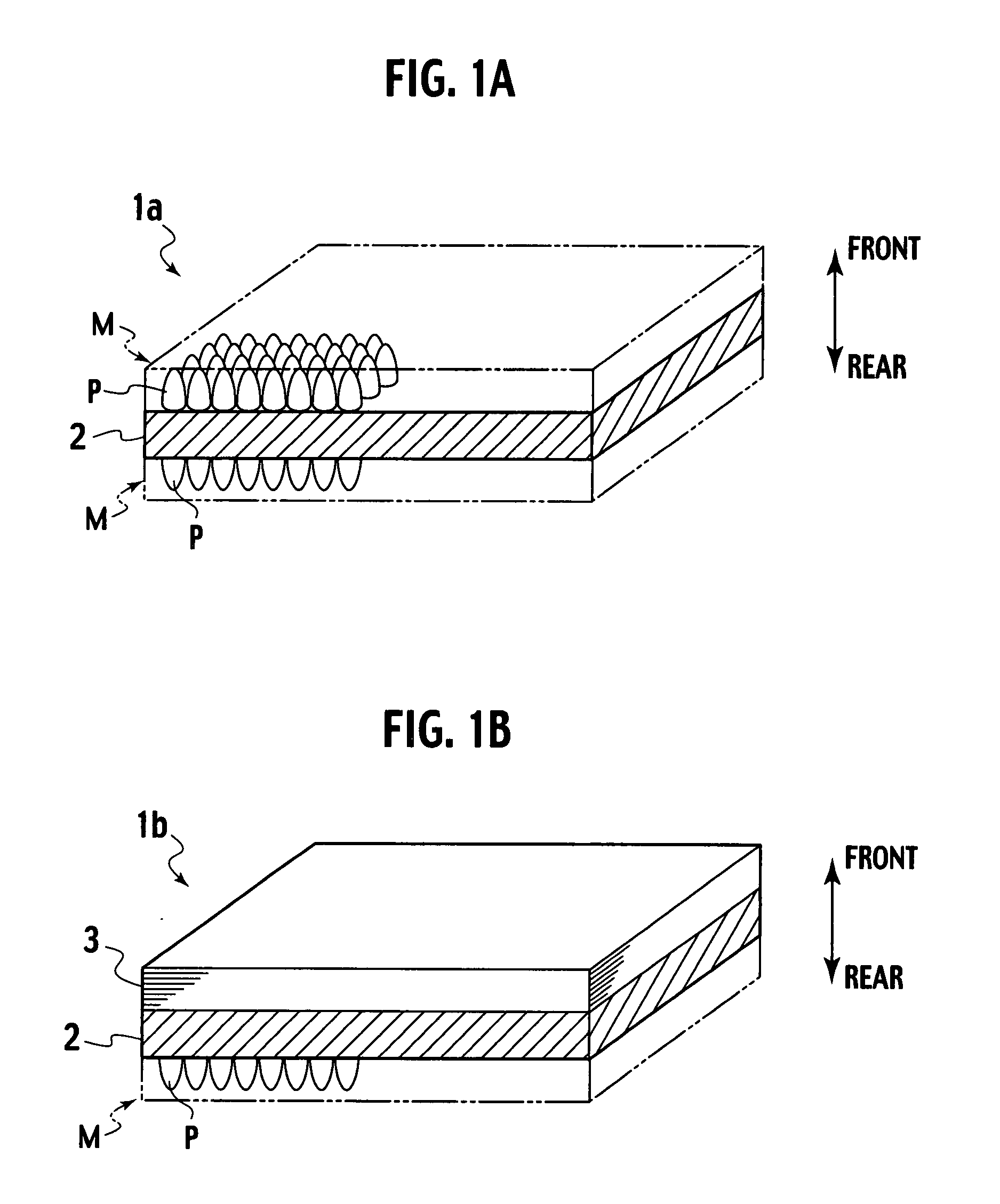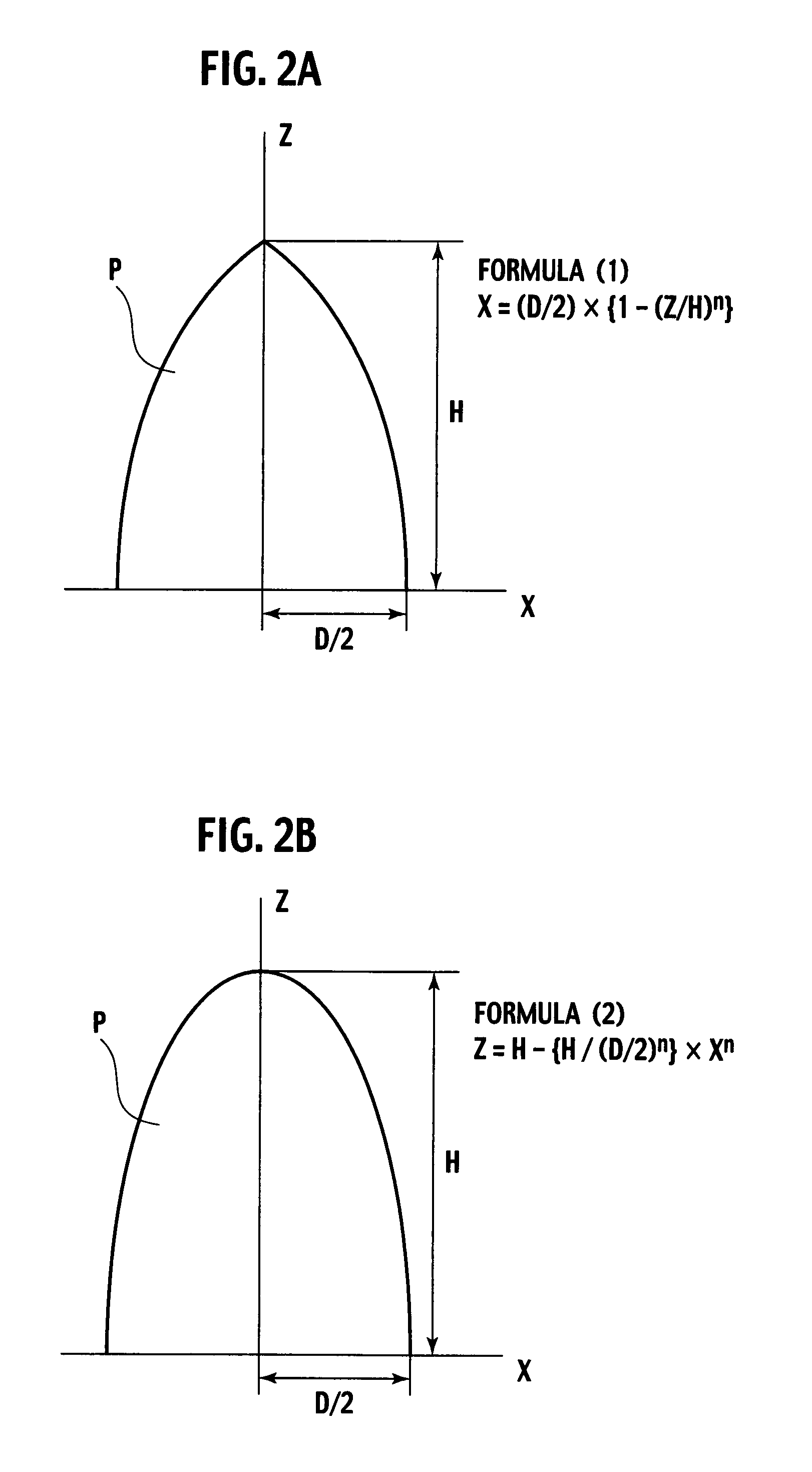Anti-reflection microstructure, anti-reflection mold body, and method of manufacturing the same
a mold body and anti-reflection technology, applied in the field of anti-reflection microstructure and anti-reflection mold body, can solve the problem that the anti-reflection mold body fails to achieve a sufficient anti-reflection effect, and achieve the effect of superior anti-reflection function
- Summary
- Abstract
- Description
- Claims
- Application Information
AI Technical Summary
Benefits of technology
Problems solved by technology
Method used
Image
Examples
example 1
[0051] A die was fabricated by use of a commercially available electron beam lithography system. This die was heated up to 150° C., and then pressed against both surfaces of a polymethylmethacrylate base material at a pressure of 10 MPa for 1 hour. Thereafter, the base material was cooled down to 70° C. or below. In this way, an anti-reflection mold body was fabricated, provided with anti-reflection microstructures M where the fine convex portions P are arranged in a hexagonal close-packed structure. The convex portion P had a square base, a diameter D of a circumscribed circle thereof equal to 250 nm, and a height H equal to 500 nm (H / D=2). An edge line shape thereof was expressed by the 1.2th order linear formula (1).
[0052] The anti-reflection mold body thus obtained was subjected to measurement of average reflection rate at a light incident angle of 0 degrees and in a wavelength range from 380 to 780 nm by use of a multi-angle spectrophotometer (made by Otsuka Electronics, Co., ...
example 2
[0053] By repeating the same operations as Example 1, another die was fabricated by use of the same electron beam lithography system. Using the die, an anti-reflection mold body was fabricated, provided with anti-reflection microstructures M in which the fine convex portions P are arranged in a hexagonal close-packed structure, on both surfaces of the polymethylmethacrylate base material. The convex portion P had a square base, a diameter D of a circumscribed circle thereof equal to 250 nm, and a height H equal to 750 nm (H / D=3). An edge line shape thereof was expressed by the 1.5th order linear formula (1).
[0054] The anti-reflection mold body thus obtained was subjected to measurement of average reflection rate at the light incident angle of 0 degrees and in the wavelength range from 380 nm to 780 nm by use of the same multi-angle spectrophotometer. The average reflection rate was equal to 0.06%.
example 3
[0055] By repeating the same operations as Example 1, another die was fabricated by use of the same electron beam lithography system. Using the die, an anti-reflection mold body was fabricated, provided with anti-reflection microstructures M where the fine convex portions P are arranged in a hexagonal close-packed structure on both surfaces of the polymethylmethacrylate base material. The convex portion P had a square base, a diameter D of a circumscribed circle thereof equal to 300 nm, and a height H equal to 300 nm (H / D=1). An edge line shape thereof was expressed by the second order linear formula (1).
[0056] The anti-reflection mold body thus obtained was subjected to measurement of average reflection rate at the light incident angle of 0 degrees and in the wavelength range from 380 nm to 780 nm by use of the same multi-angle spectrophotometer. The average reflection rate was equal to 0.51%.
PUM
| Property | Measurement | Unit |
|---|---|---|
| diameter | aaaaa | aaaaa |
| transparent | aaaaa | aaaaa |
| wavelength | aaaaa | aaaaa |
Abstract
Description
Claims
Application Information
 Login to View More
Login to View More - R&D
- Intellectual Property
- Life Sciences
- Materials
- Tech Scout
- Unparalleled Data Quality
- Higher Quality Content
- 60% Fewer Hallucinations
Browse by: Latest US Patents, China's latest patents, Technical Efficacy Thesaurus, Application Domain, Technology Topic, Popular Technical Reports.
© 2025 PatSnap. All rights reserved.Legal|Privacy policy|Modern Slavery Act Transparency Statement|Sitemap|About US| Contact US: help@patsnap.com



